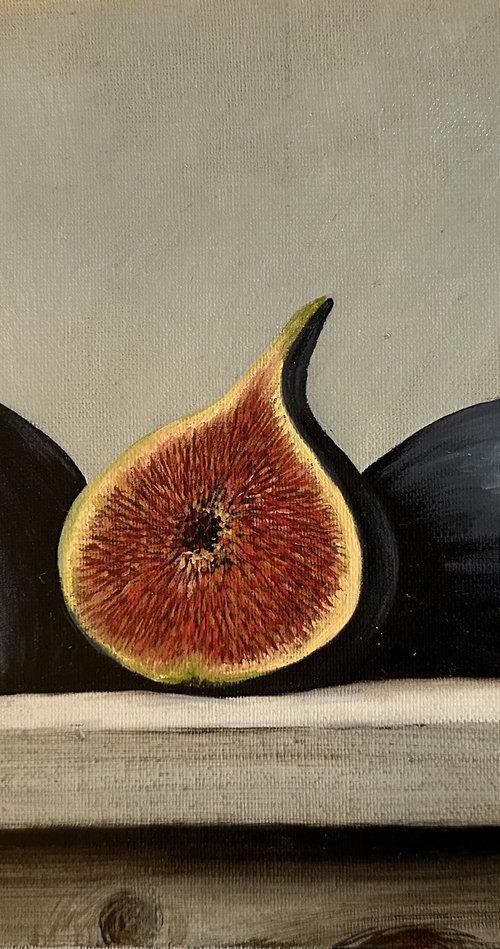Oil Paintings for Sale to Elevate Any Room
Oil Paintings for Sale to Elevate Any Room
Blog Article
Checking out All Regarding Oil Paints: A Guide to Comprehending Their Appeal and Value
Oil paintings have mesmerized target markets for centuries, using a look right into the creative proficiency of different ages. Their abundant background is linked with ingenious methods and profound emotional expression. Understanding the products and techniques behind these artworks can improve gratitude. Furthermore, the market for oil paintings offers possibilities for enthusiasts and capitalists alike. As one discovers this remarkable globe, the question develops: what makes an oil painting genuinely beneficial?
The Background of Oil Painting: A Trip With Time
Oil painting has roots that date back to ancient times, it really prospered during the Renaissance, when musicians uncovered its adaptability and rich shade potential. Early examples can be traced to the 7th century, with methods advancing significantly across societies. The tool became noticeable in Northern Europe in the 15th century, particularly via the works of artists like Jan van Eyck, that pioneered its use for detailed realism and vivid hues. This duration noted a departure from tempera paints, enabling greater deepness and texture. As oil paint spread, it affected many musicians, resulting in work of arts by popular numbers such as Leonardo da Vinci and Rembrandt. The medium's tradition proceeds, shaping the art world well into modern times.
Comprehending Oil Repaints: Products and Techniques
As artists check out the globe of oil paints, they encounter a diverse variety of products and methods that specify this tool. The primary components of oil paint include pigments, which supply shade, and drying out oils, such as linseed, that bind the pigments and help with application. Numerous additives can modify the paint's texture and drying time, improving versatility. Methods like glazing, where clear layers are developed, and impasto, which involves applying thick paint, enable different visual effects. In addition, the use of brushes, palette knives, and even fingers can develop one-of-a-kind textures and finishes. Understanding these products and methods allows artists to totally reveal their creative thinking and accomplish the desired effect in their artwork.
The Role of Color in Oil Paints
Shade plays an essential role in oil paintings, influencing both aesthetic charm and emotional vibration. Comprehending color theory fundamentals, including the relationships between tones, can boost a musician's capacity to share mood and ambience. Furthermore, mastering shade mixing techniques allows for greater deepness and richness in a paint's combination.

Color Theory Basics
Recognizing shade theory is necessary for musicians collaborating with oil paints, as it develops the foundation for creating aesthetically appealing and harmonious compositions. Shade theory incorporates the research of exactly how shades connect, the shade wheel, and the connections between primary, secondary, and tertiary shades. Artists utilize corresponding shades to enhance contrasts and create focal points, while analogous shades advertise unity and cohesiveness within an item. Furthermore, the principles of warm and amazing colors affect the understanding of depth and room in a painting. Grasping these principles enables artists to control color properly, assisting the audience's eye and connecting their designated message. Mastery of shade concept ultimately improves an artist's capability to convey feelings and concepts with their job.
Emotional Impact of Color
The psychological impact of shade in oil paintings plays an important role in exactly how viewers regard and link with artwork. Shades evoke particular sensations and moods, affecting the audience's emotion. Warm hues like reds and oranges can produce a feeling of heat and power, while cool tones such as blues and eco-friendlies usually stimulate peace or self-questioning. Artists strategically choose color schemes to boost narrative elements, guiding the target market's psychological journey. The saturation and contrast of colors further magnify these impacts, attracting interest and developing focus. Inevitably, the interaction of shades in oil paints not just boosts their visual charm however likewise works as a powerful medium for emotional expression, enhancing the visitor's experience and analysis.
Shade Combining Techniques
While numerous elements of oil painting add to the total make-up, grasping shade mixing techniques is important for accomplishing wanted results and deepness. Color blending can be come close to via different approaches, consisting of the additive and subtractive processes. Additive mixing entails combining colors of light, while subtractive blending counts on pigments, where colors blend to create new tones. Artists usually make use of a restricted combination to produce harmonious jobs, comprehending the relationships in between main, secondary, and tertiary colors. Techniques such as glazing and scumbling better boost deepness and luminosity. By masterfully mixing shades, an artist can stimulate emotions, develop prime focus, and achieve a feeling of realistic look, eventually elevating the paint's aesthetic and psychological influence.
Famous Oil Painters and Their Iconic Functions

Renowned for their proficiency of color and strategy, oil painters have developed a few of one of the most well known art work in background. Popular musicians like Vincent van Gogh captivated target markets with his stirring brushwork in "Starry Night," while Claude Monet's "Perception, Sunrise" laid the groundwork for Impressionism. Leonardo da Vinci's "Mona Lisa" continues to be a long-lasting icon of artistic genius, showcasing his skill in catching human expression. Rembrandt's "The Night Watch" illustrates his ingenious use of light and darkness. Various other remarkable numbers consist of Pablo Picasso, who transformed modern art with his vibrant experimentation in jobs like "Les Demoiselles d'Avignon," and Georgia O'Keeffe, whose vibrant depictions of landscapes and blossoms aided specify American modernism. Each artist's unique design added substantially to the oil painting landscape.
How to Evaluate the Quality of an Oil Paint
Reviewing the high quality of an oil paint involves a careful analysis of workmanship techniques, in addition to an analysis of shade and structure. Observing brushwork, layering, and the application of paint can reveal the musician's ability level. Additionally, the interplay of shades and the total plan of aspects add substantially to the paint's visual value.
Analyzing Workmanship Methods
A careful evaluation of workmanship methods is crucial for determining the top quality of an oil painting. Critics should initially examine the application of paint; thick, distinctive brushstrokes might suggest a knowledgeable hand, while extremely consistent applications could show a lack of deepness. oil paintings for sale. The layering technique is additionally important; the visibility of lusters and varied density can enhance brightness and complexity. In addition, the quality of the products made use of, such as the canvas and pigments, plays a considerable duty in durability and general aesthetic. Focus to information in elements like sides and shifts between shades reflects the musician's commitment to their craft. Eventually, these strategies add to the paint's psychological effect and market worth, working as indications of the musician's skill and intent
Examining Shade and Composition
While examining the quality of an oil painting, one need to concentrate on the interaction of shade and composition, as these aspects are essential to the artwork's general influence. Shade choices can develop and stimulate emotions mood; as a result, the musician's scheme should be taken a look at for consistency and comparison. A healthy composition directs the audience's eye and produces a sense of unity. Artists commonly use strategies like the regulation of thirds or leading lines to enhance aesthetic passion. Additionally, using light and shadow can include depth, improving the three-dimensionality of the paint. Ultimately, a successful oil painting marries color and composition, engaging the viewer and welcoming a much deeper admiration of the musician's vision and technique.
Caring for and Preserving Oil Paintings
Appropriate care and conservation of oil paints is essential for preserving their stability and durability. To shield these art work, it is vital to display them away from straight sunshine, which can create fading and discoloration. Maintaining a steady atmosphere with controlled temperature and humidity further help in avoiding damages. Cleaning should be done gently using a soft, dry towel, preventing any rough chemicals that could damage the paint or varnish. Regular evaluations for signs of wear and tear, such as cracking or flaking, are recommended. When moving or saving oil paints, correct cushioning and framing are required to avoid physical injury. Inevitably, thorough care contributes to the aesthetic charm and worth of oil paintings over time.
The Market for Oil Paintings: Spending and accumulating
Comprehending the marketplace characteristics for oil paints is crucial for collection agencies and financiers alike. The worth of these art work is influenced by various aspects, consisting of the musician's reputation, historical significance, and existing trends. Collectors frequently look for items that resonate directly while thinking about prospective admiration in value. Public auctions and galleries offer as key locations for acquiring and selling, with rates varying based on need and rarity. Buying oil paints requires research study into the marketplace, along with an understanding of credibility and provenance. Additionally, emerging artists might use possibilities for substantial returns, while established names can regulate high rates. Generally, a strategic click here technique to collecting can produce both visual pleasure and economic rewards.

Regularly Asked Questions
What Are the Ecological Influences of Oil Painting Materials?
The ecological influences of oil painting materials consist of the release of unpredictable natural compounds (VOCs), unsafe waste generation, and resource extraction for pigments. These elements add to air pollution and eco-friendly degradation, increasing worries amongst eco mindful musicians and consumers.
Just How Do Different Canvases Impact Oil Painting Outcomes?
Various canvases influence oil paint results significantly. Texture, surface area, and absorbency top quality can alter paint application, drying times, and color vibrancy. Artists commonly pick certain canvases to attain desired impacts and boost their artistic expression.
Can Oil Paintings Be Brought Back if Harmed?
If damaged, Oil paintings can undoubtedly be recovered. Professional conservators make use of various techniques to repair tears, clean surfaces, and address discoloration, ensuring that the art work preserves its original appeal and worth for future generations.
What Are the Indications of an Original Oil Painting?
The indicators of an initial oil painting consist of visible brush strokes, texture variants, and an unequal canvas weave (oil paintings for sale). Furthermore, authenticity may be verified through provenance, trademarks, and the presence of a varnish layer unique to oil tools
Exactly How Has Technology Influenced Modern Oil Paint Techniques?
Innovation has substantially affected modern oil paint strategies by presenting electronic tools for preparation, boosted materials for appearance and durability, and online systems for marketing and sharing art, consequently expanding musicians' creative opportunities and audience reach. Oil paint has origins that date back to ancient times, it absolutely grew throughout the Renaissance, when artists uncovered its adaptability and abundant color possibility. The psychological impact of color in oil paintings plays a vital role in just how customers view and attach with artwork. While several elements of oil paint contribute to the general structure, mastering shade mixing strategies is necessary for accomplishing wanted results and depth. Evaluating the top quality of an oil paint includes a cautious assessment of craftsmanship methods, as well as an evaluation of color and make-up. While examining the top quality of an oil paint, one must concentrate on the interaction of color and make-up, as these elements are fundamental to the artwork's overall effect.
Report this page